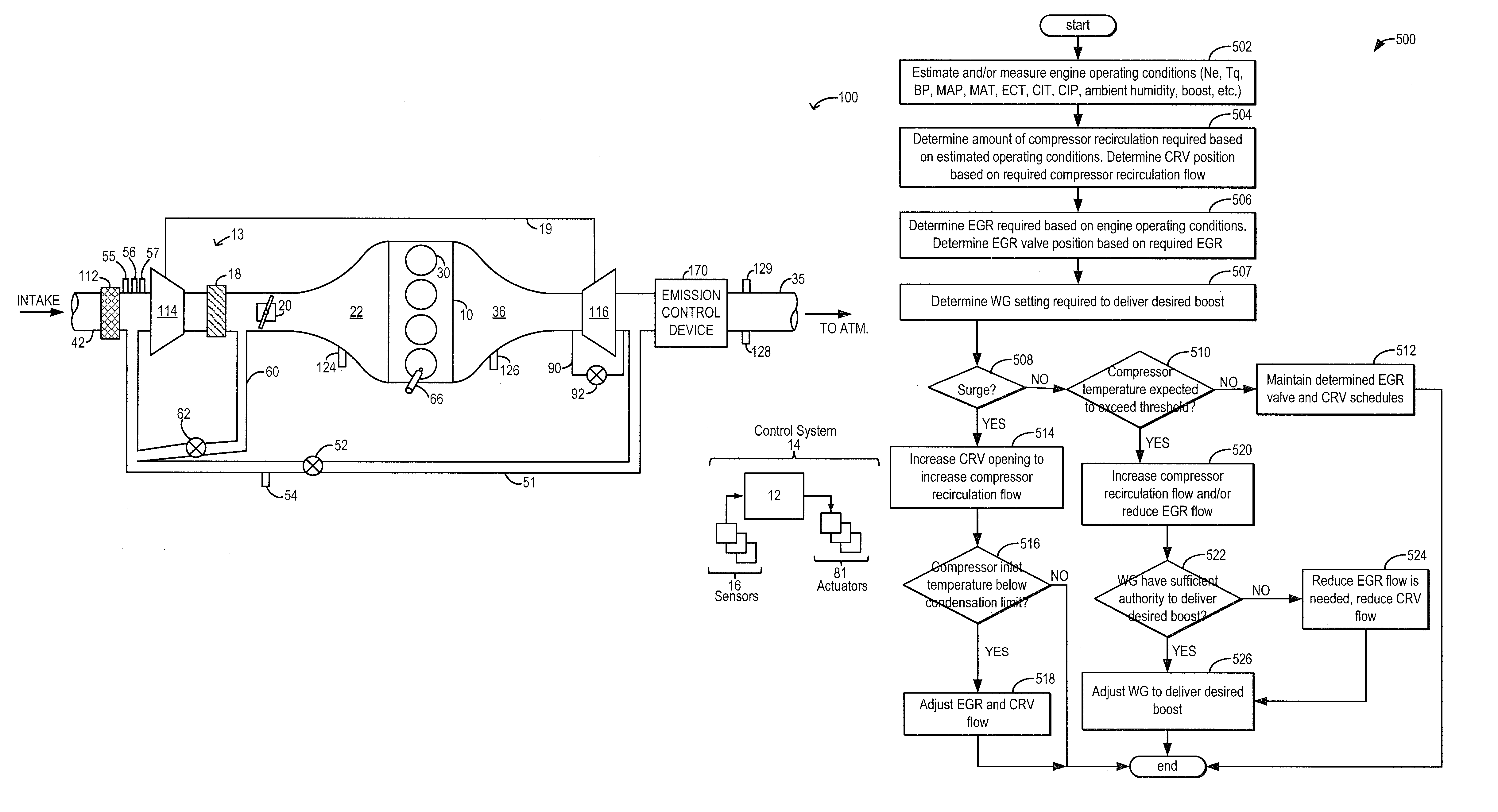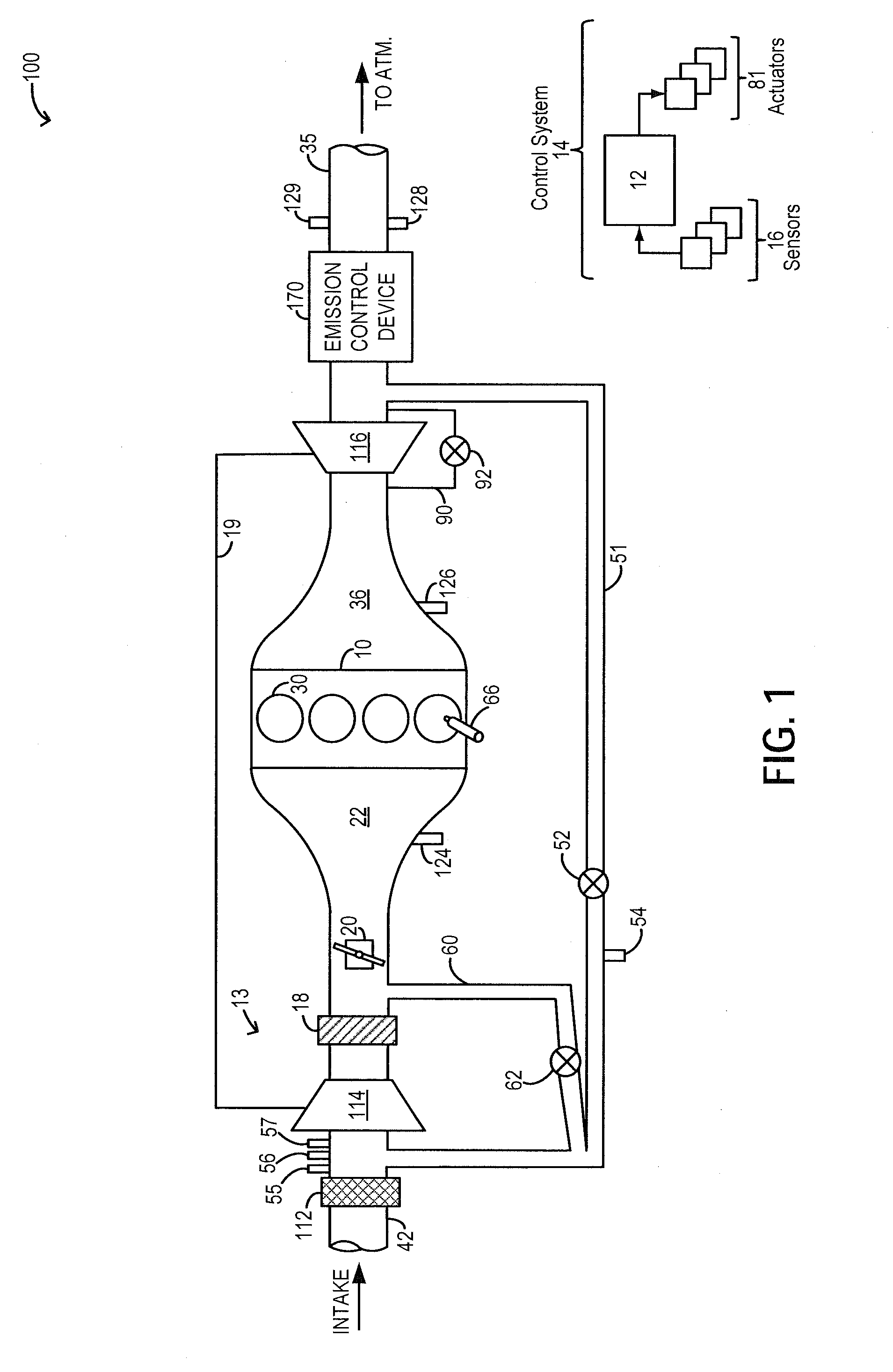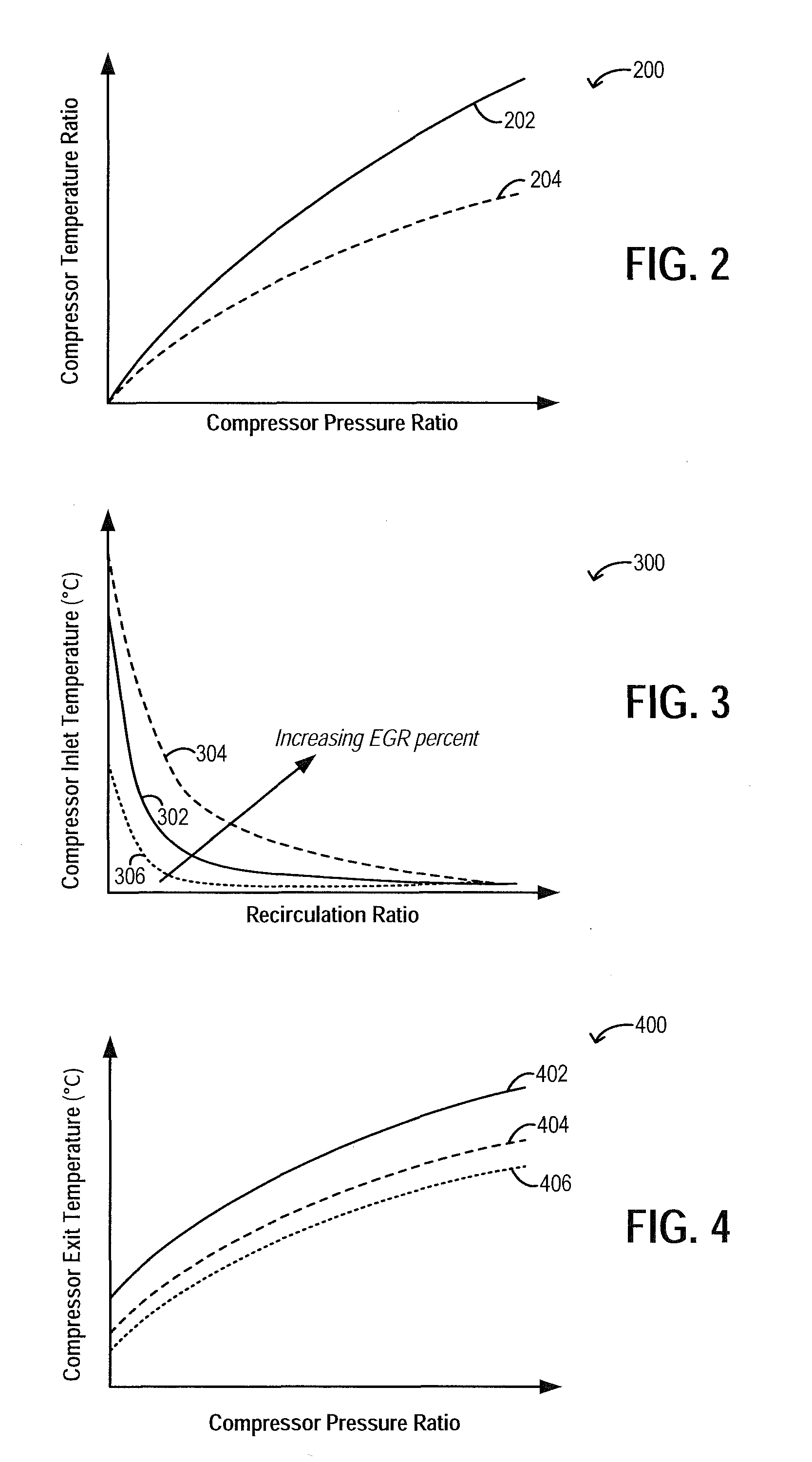Methods and systems for boost control
a boost control and boost technology, applied in the direction of electric control, machines/engines, mechanical equipment, etc., can solve the problems of increasing the risk of condensation at both the compressor inlet and the charge air cooler outlet, damage to the blades, and introduction of water into the engine, so as to improve the peak power output, reduce the effect of exhaust emissions, and increase the dilution of the engin
- Summary
- Abstract
- Description
- Claims
- Application Information
AI Technical Summary
Benefits of technology
Problems solved by technology
Method used
Image
Examples
Embodiment Construction
[0016]The following description relates to systems and methods for adjusting a proportion of compressed aircharge recirculated to a compressor inlet in a boosted engine system, such as the system of FIG. 1, from downstream of a charge air cooler. A controller may be configured to perform a control routine, such as the routine of FIG. 5, to adjust the amount of cooled compressed aircharge recirculated from downstream of the charge air cooler relative to the amount of EGR based on surge and condensation considerations. Therein, the controller may adjust the amounts based on a compressor inlet temperature and further based on EGR so that a temperature and humidity of an aircharge entering the compressor is maintained above a threshold where condensation can occur. The controller may also adjust the amounts based on an indication of compressor surge to improve a margin to the surge limit. As elaborated at FIG. 5, the controller may select between using increased hot EGR or increased rec...
PUM
 Login to View More
Login to View More Abstract
Description
Claims
Application Information
 Login to View More
Login to View More - R&D
- Intellectual Property
- Life Sciences
- Materials
- Tech Scout
- Unparalleled Data Quality
- Higher Quality Content
- 60% Fewer Hallucinations
Browse by: Latest US Patents, China's latest patents, Technical Efficacy Thesaurus, Application Domain, Technology Topic, Popular Technical Reports.
© 2025 PatSnap. All rights reserved.Legal|Privacy policy|Modern Slavery Act Transparency Statement|Sitemap|About US| Contact US: help@patsnap.com



